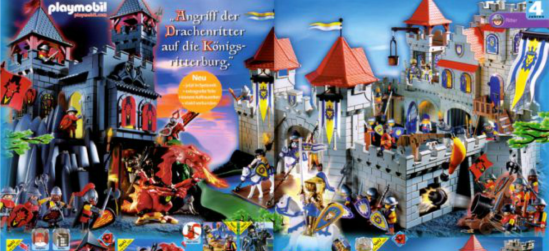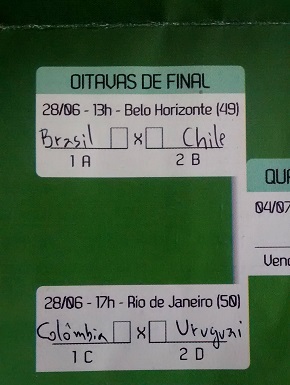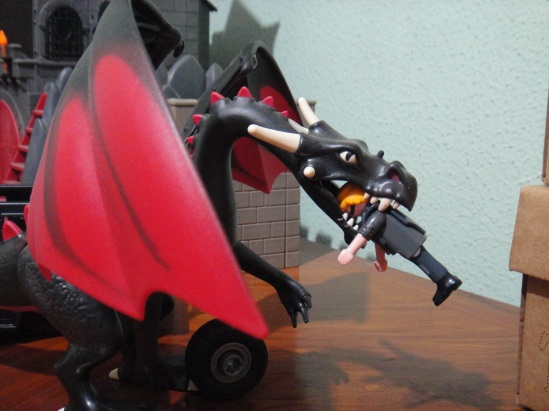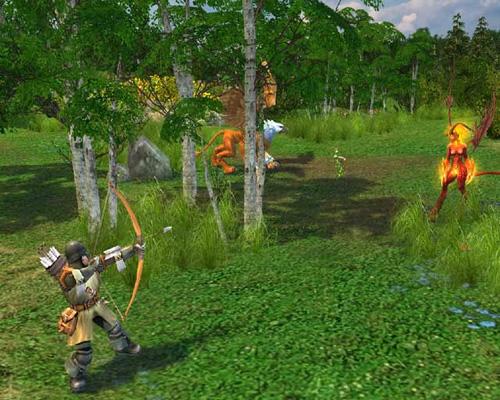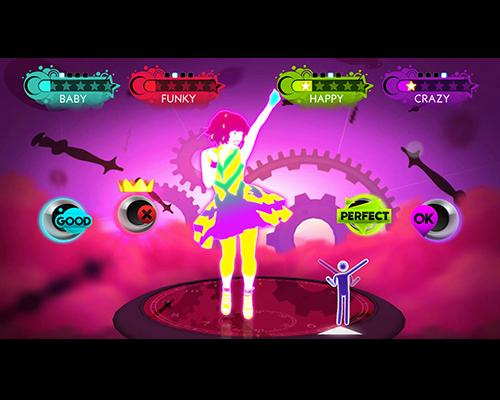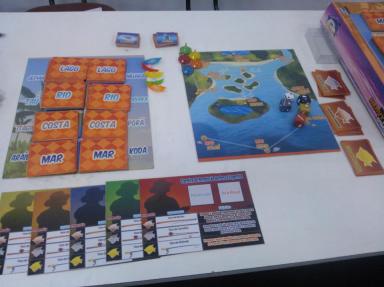As fans worldwide celebrate 40 years of Playmobil, I decided to play with their history. The above diorama is my take on a catalogue scene from 10 years ago: “Dragon Knights Attack at the Knights’ Empire Castle”. It was a double challenge: to “translate” the original image, and to do it as a single diorama (not a collage, as in the catalogue).
I love how the theme cycles work in Playmobil: new items will often arrive as a fluid sequence to existing collections. That makes it easier for toy stores to mix their products, and for children to assemble their collections, of course, but for me the magic is in their elegant evolution: after the launching of a new pirate collection, for instance, you may expect mermaids (done) and even ghost pirates (done!).
The Rock Castle (set 3269) came to be in 2004 as a star in a specific trend for the traditional knights theme: it was the beginning of a whole new branch in the catalogue. The usual medieval characters would don blue and gold; the Dragon knights were the red faction. Later the Barbarians would join the stage, presented as a purple faction. It was a beautiful contrast: the Lion knights had a trained falcon, while the Dragon castle had crows; while the Lion nobles feasted, the Dragon warriors ate in a den, surrounded by rats. As the years passed, a Dragon World would come true, and now Asian Dragons are available in stores.
So I came up with a scene that shows a bit of this history, as many of the figures are newer, darker Dragon releases. The golden hero that leads the resistance, on the other hand, is (mostly) the shiny 5477 set (Golden Knight Christopher).

